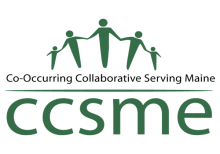Forum Replies Created
-
AuthorPosts
-
Erin Daigle
ParticipantMI-Lesson 2
Q1-Initially it felt familiar. I have worked with various individuals who are/were similar to ‘Rounder,’ specifically the level of ambivalence to change. It was interesting to witness the course of the discussion and how change talk started to occur.
Q2-
Sustain Talk examples:
-“the only reason I am coming here is so maybe I can save my driver’s license…” (Reason)
-“I drink a little bit, but I work hard,” (Need)
-“yeah, the court sent me here.” (Reason)
Change Talk examples:
“I wouldn’t mind coming here to live…” (Commitment)
“As long as I am putting all this money into it I’d like to come out with something.” (commitment)
Q3-Complex reflection: “This accident is what caused you to have to come in here and got you in all that trouble at work and now they’re thinking about taking your driver’s license away and that’s why you gotta come here.”
Strategic Response (emphasizing personal autonomy): “Well I think, you know you’re the only one that really needs to make that decision about what’s the right kind of treatment for you. I couldn’t decide that for you.”
The use of strategic responses, specifically emphasizing personal autonomy, seemed to shift the conversation to more change talk. Also, Rounder started to present with more curiosity about what his options could be for treatment vs. being told what he needs to do. The use of reflective listening in the conversation provided client with validation and some normalizing of thinking differing ways about something.
Q4: Some examples of Rounder’s readiness to change were towards the end of the interview. He started to ask some questions about the treatment facility and what being there entails, he reflected on how if he does not stop drinking, then he will continue to have problems with the law/ “be right back in this mess again.” He identified a behavior that he had been able to change (fighting) and how it was able to change it. He shared how other aspects of his life might improve if he stopped drinking and how that is a motivator.
If I were interviewing Rounder and I noticed signs of readiness to change, I would summarize the highlights from the change talk and request feedback/clarification from the client to make sure it is accurate and then ask a key question. I would probably ask a question along the lines of: “Where do you go from here?”Erin Daigle
ParticipantMI-Lesson 1 Homework
3.9.22Q1-As I watched the first video (confrontational), I observed myself cringing and starting to feel uncomfortable with observing the confrontation. My reaction to the second video was mental and physical. I noticed my thoughts were not protective of the client, as he was being provided space to express his experience and perception of the identified issue. Also, I did notice my body begin to relax a bit, after being tense while watching the first interaction.
Sal’s reactions to confrontational style: defensive, irritated, defiant and angry.
Sal’s reactions to MI style: receptive, engaged, validated and decreased ambivalence.Sal was more engaged and receptive to the MI interviewing style and could help him move closer toward changing behaviors to manage his asthma. Sal appeared to be heard and seen by the provider. Use of MI provided opportunity for him to examine the issue and share his insight on what he is able to change at this time. Ultimately, it was his idea and decision to make a change, not being ‘told’ what to do.
Q2-Behavior: Procrastination—
Statements of ambivalence:
A. “I work better under pressure.”
B. “I have always done it this way.”
C. “I do not know where to start to do things differently.”
Double-sided reflections:
A. You might perform better under pressure however you often feel more stressed out.
B. On one hand this is a behavior you have been doing for a very long time and decreasing your stress levels supports your desire to take better care of yourself.
C. On one hand it can be very overwhelming to determine what to do first and there is a part of you that is open to taking an action step.
Reactions to exercise: I was able to look at myself and the behavior of procrastinating with more compassion. I found it helpful to put into words the undue amount of stress I am under when I procrastinate, and how I would like to live my life differently.Q3- Consumer-generated target behaviors-
1. Reset mind and body.
2. Learn healthier behaviors and make them habits.
3. Address PTSD symptoms impacting functioning.Provider-generated agenda:
1. Diagnostic and medication evaluation to determine if symptoms are being targeted appropriately.
2. Address interpersonal issues.
3. Alternative tx options?The ‘righting reflex’ came into play when I had a different train of thought of how the consumer might go about resetting nervous system. I asked the consumer to tell me more about their thoughts and then asked if I could provide feedback. They said yes, and I expressed concern that perhaps the reported symptoms are not changing due to mis-diagnosis/wrong meds? I wanted that option to be considered and it really wasn’t. The practice of summarizing more in session could be helpful for the client. So they have the opportunity to confirm or shift what it is I am hearing they say they need and want.
Erin Daigle
ParticipantHi, my name is Erin and I am licensed as a clinical social worker in Maine & Massachusetts. I am in private practice in Westbrook. Through this course, I am hoping to strengthen MI skills to support clients with facilitating change for themselves.
-
AuthorPosts
